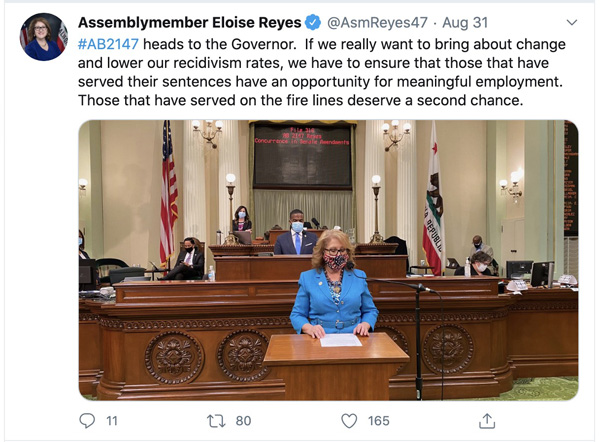Updated 11:39 a.m. PDT June 8, 2022
The inmate firefighters who suffered burn injuries June 7 in Southern California were all in stable condition when the LA County Fire Department posted an update on Twitter at 3:11 p.m. PDT June 7, 2022.
“A flash fire occurred in the back of an inmate camp crew vehicle,” the tweet said. “Six patients were transported to hospitals w/mild to moderate burns & all are currently in stable condition. Incident is under investigation.”
From NBC4, at 8:30 p.m. June 7, 2022:
One inmate was treated for critical injuries at a burn center with burns covering over 12% of his body, but officials say he is expected to be ok. The other five inmates suffered minor injuries.
The inmate firefighters were in the back of a transport vehicle leaving a training exercise when the fire started, authorities say. Authorities confirm that the fire was not related to the training exercises they were performing and was not apart of any escape plan.
Inmate firefighters are not allowed to have an flammable materials in the back of the trucks which include cigarettes, lighters, and liquids. It is unclear what started the fire and officials are still investigating it.
2:57 p.m. PDT June 7, 2022

Six firefighters were injured near Castaic, California Tuesday morning. Not all the details are known but initial reports, which can change, is that they were taking part in a training exercise and had burn injuries.
Four were transported to hospitals in two helicopters and two went by ground ambulance.
All six patients were inmate firefighters from the California Department of Corrections and Rehabilitation, said Los Angeles County Fire Department spokesperson Geovanni Sanchez. Emergency crews responded shortly after 11 a.m. following reports of burned patients on Templin Highway near Castaic, said Esteban Benitez, another spokesman for the county.
Thanks and a tip of the hat go out to Tom.






